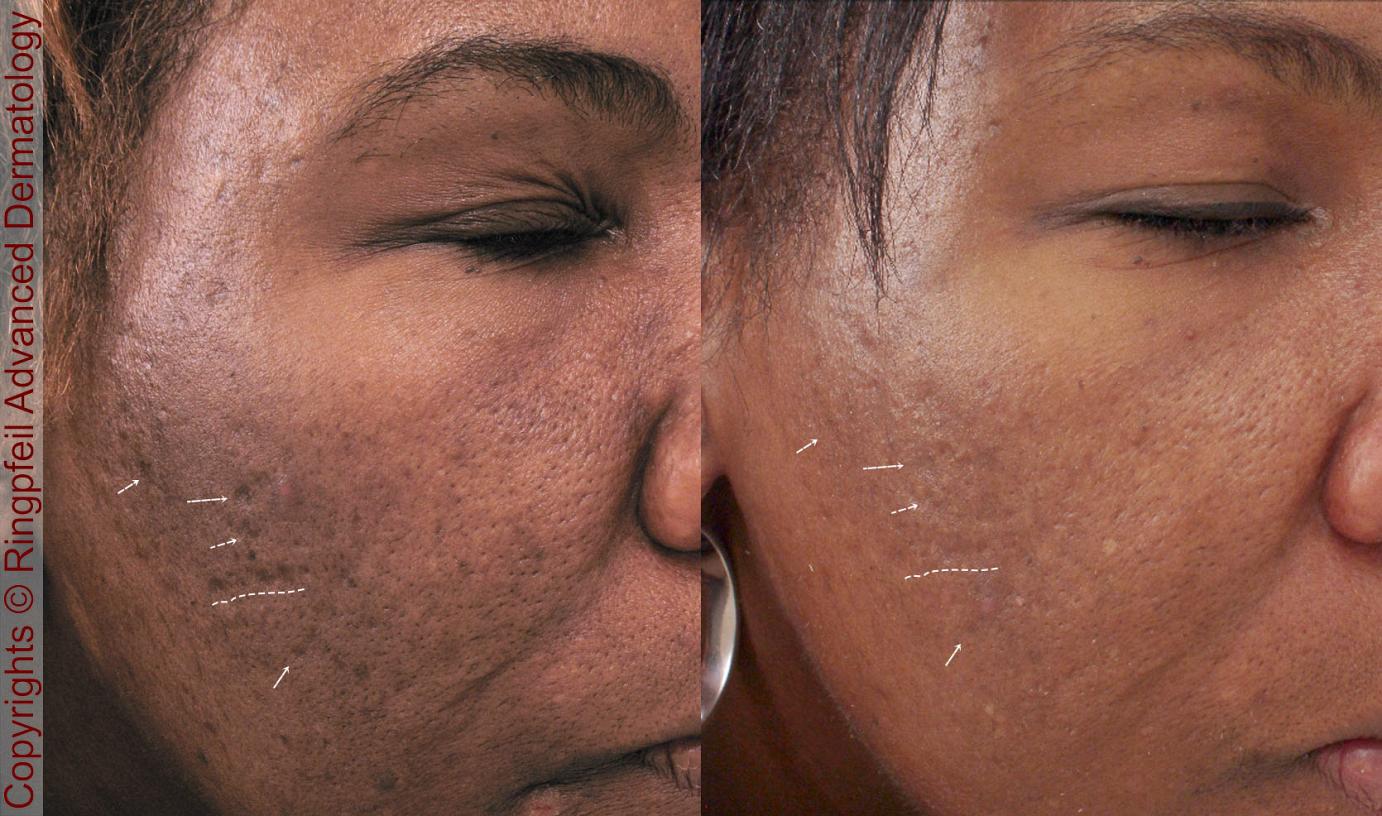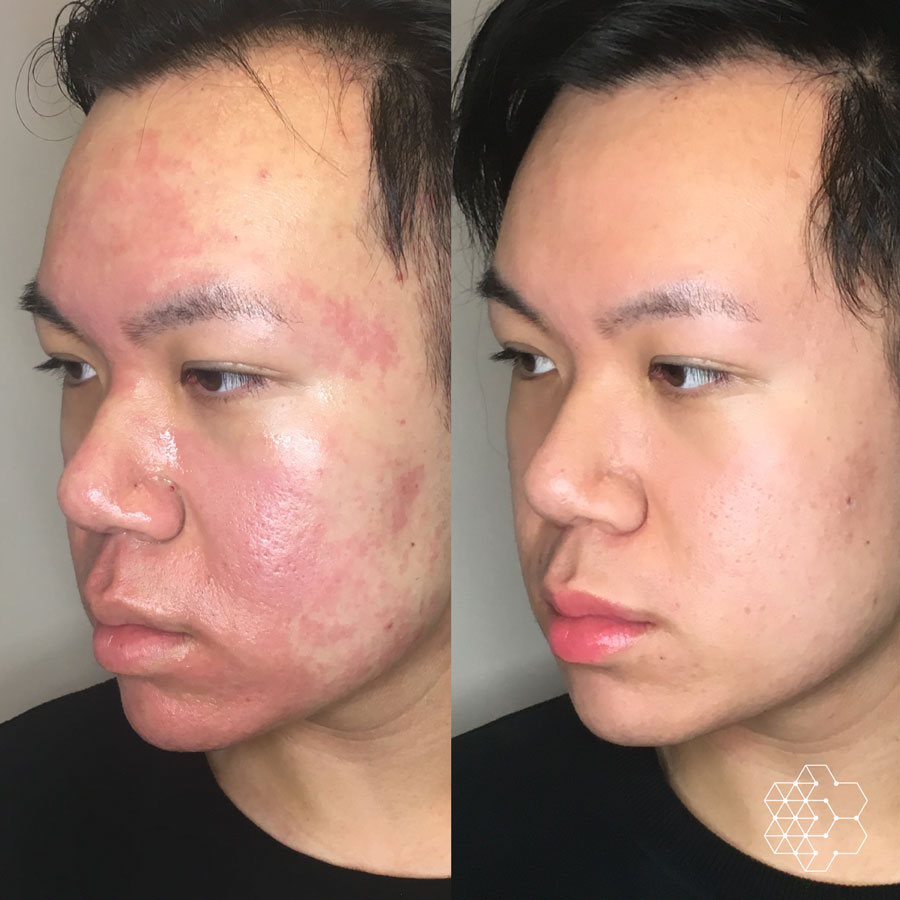Exploring Skin Disease: Dealing With and determining Acne Scars for Healthier Skin
Acne marks represent a substantial problem for people looking for to keep healthy skin, as they can impact both look and self-esteem. Understanding the different kinds of marks, from atrophic to hypertrophic, is vital for identifying appropriate treatment choices.
Comprehending Acne Scars

The body's all-natural recovery process can result in either atrophic marks, which look like anxieties in the skin, or hypertrophic marks, which are raised and arise from overflow of collagen. Furthermore, the psychological toll of acne scars must not be underestimated; lots of people report feelings of humiliation, stress and anxiety, and reduced self-worth. This psychological burden can affect social communications and total lifestyle.
Resolving acne marks calls for a thorough understanding of their formation and influence. Awareness of the capacity for long-term consequences linked with without treatment scars can motivate people to seek ideal treatments. Early treatment and reliable management strategies can significantly enhance skin appearance and boost psychological durability, highlighting the value of recognizing the complexities surrounding acne marks.
Kinds Of Acne Scars
Acne scars can be classified into distinctive kinds, each showing one-of-a-kind characteristics and requiring certain treatment techniques. acne and acne scars treatment. The key kinds of acne scars include atrophic, hypertrophic, and keloid scars

Hypertrophic marks, on the other hand, are increased above the skin degree and are the result of too much collagen production throughout the recovery procedure. They generally remain within the boundaries of the original acne sore. Keloid scars are comparable yet prolong beyond the initial injury site, developing larger, elevated locations that can be painful or itchy.
Recognizing these sorts of marks is vital for picking suitable therapy choices. Various marks might react much better to certain therapies, such as laser treatments, fillers, or medical interventions, highlighting the significance of a customized strategy to acne scar management.
Determining Your Scars
When evaluating the look of your skin, it is crucial to properly determine the sort of scars present, as this will certainly educate one of the most effective therapy technique. Acne scars usually come under two classifications: atrophic and hypertrophic scars. Atrophic scars, which are the most typical, look like clinical depressions or indentations on the skin. These can additionally be classified into ice-pick scars, boxcar scars, and rolling marks, each displaying distinctive qualities and needing various methods for assessment.
Hypertrophic scars, on the various other hand, are elevated and happen as a result of excessive collagen production throughout the recovery process. Identifying the particular attributes of your marks-- such as texture, depth, and size-- is important for proper recognition (acne and acne scars treatment). Furthermore, consider the circulation of scars across your skin, as this can show the severity and period of the acne condition
Involving with a skin specialist can give beneficial understandings right into the nature of your scars, aiding in the differentiation between various types. An extensive understanding of your scars will inevitably result in a much more customized and efficient treatment strategy, ensuring a more clear and healthier skin tone.
Treatment Options Available
Identifying the details kind of acne scars present on your skin lays the groundwork for checking out effective therapy options. Typical sorts of acne marks include atrophic (depressed), hypertrophic (increased), and post-inflammatory erythema.
For atrophic marks, alternatives such as chemical peels, microneedling, and laser resurfacing are extensively utilized. Chemical peels off make use of acids to get rid of the external layer of skin, promoting brand-new cell development. Microneedling includes little needles that create micro-injuries, promoting collagen production. Laser resurfacing targets damaged skin cells, enhancing texture and tone.
Hypertrophic marks can be treated with corticosteroid injections to squash the scar or laser treatment to reduce redness and boost look. Silicone gel sheets and pressure dressings might likewise assist in taking care of raised marks.
Furthermore, dermal fillers can briefly fill out anxieties from atrophic marks, while medical excision might be suitable for serious instances. Each treatment choice has its factors to consider and benefits, making it necessary to speak with a dermatologist. They can supply tailored referrals based upon the kind and extent of your scars, along with your skin type and overall wellness.
Tips for Prevention
Effective avoidance methods can significantly minimize the probability of developing acne scars. The very first step is to keep a consistent skincare regimen that consists of mild cleaning, exfoliation, and moisturizing. Utilizing non-comedogenic products aids stop clogged up pores, which can intensify acne. Furthermore, integrating topical therapies having salicylic acid or benzoyl peroxide can successfully lessen and handle outbreaks inflammation.
Preventing the impulse to choose or stand out acne lesions is essential, as this can bring about much deeper skin damage and boost the danger of scarring. Instead, consider utilizing a chilly compress or non-prescription therapies to lower swelling and redness.
Sunlight protection is another crucial element of avoidance; ultraviolet (UV) rays can darken marks and prevent the healing procedure. Using a broad-spectrum sun block with at the very least SPF 30 daily can secure the skin and promote even healing.
Last but not least, maintaining a well balanced diet regimen rich in minerals, antioxidants, and vitamins supports skin wellness and recovery. Staying hydrated and handling tension levels can likewise play a significant role in minimizing acne flare-ups. By implementing these methods, people can significantly minimize their possibilities of creating acne scars.
Final Thought
In final thought, understanding and recognizing acne marks is important for effective treatment and achieving much healthier skin. Numerous types of acne scars, including atrophic and acne and acne scars treatment hypertrophic scars, necessitate certain interventions customized to individual requirements.
The body's natural healing process can result in either atrophic marks, which show up as anxieties in the skin, or hypertrophic scars, which are increased and result from overproduction of collagen. They are more separated right into three subtypes: ice pick marks, boxcar marks, and rolling marks. Acne scars usually drop right into 2 classifications: hypertrophic and atrophic marks. These can additionally be identified into ice-pick marks, boxcar marks, and rolling marks, each showing distinctive characteristics and needing different methods for evaluation.
Different types of acne scars, consisting of atrophic and hypertrophic scars, require certain interventions customized to specific needs.